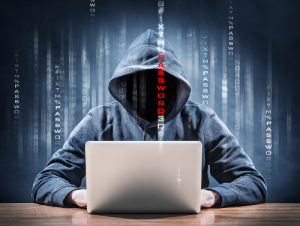The first 24 hours after someone steals your debit card can determine how much money you keep and how much you lose. Follow this guide during the first day after the crime to protect yourself and your bank account.
Call the Bank First
Sometimes, you discover debit card theft because the bank calls you about suspicious transactions. However, if you discover the theft on your own, call your bank instead of calling the merchant for these three reasons:
- Theft might originate from the merchant. If the merchant or a merchant’s employee misused your information, the merchant probably won’t admit fault or work actively to correct the error.
- Your bank has to help you. The Fair Credit Reporting Act requires banks to address disputes within 90 days. However, because most banks don’t want to be on the hook for your financial loss, they’ll resolve the matter a lot more quickly.
- The bank can prevent additional fraud. The person who stole your debit card might try to make additional charges. Your bank can cancel your current debit card and issue a new one so that you don’t incur any added financial liability.
When you call your bank, ask for an address so that you can send a follow-up letter in writing. Send it via certified mail and keep the return receipt.
Change Passwords and PINs
If your bank doesn’t immediately cancel your debit card, ask for a new PIN. If you’re worried about not having access to your card for a few days, withdraw some cash before cancelling or requesting a new PIN. Also, change your online banking password and any other passwords related to your financial accounts.
This action is especially important if you use the same password for every account. Instead of creating a password and trying to remember it, experts in information security recommend choosing a password manager, like LastPass, 1Password, or Keeper.
Password managers generate complex passwords and store them so that you don’t have to remember them. Most password managers offer not only desktop browser plug-ins but also mobile phone apps to manage passwords on the go. Never use one password (or a similar password) for all of your bank accounts. Instead, generate a unique password for each different account. Create a password using a phrase, such as “debitcardtheftnowaynohow,” or choose a password that mixes uppercase characters, lowercase characters, numbers, and symbols. If your bank offers two-factor authentication, which sends a one-time code to your phone when you login to your account, use it.
Spread Out Your Banking
You can open a new account with your current bank, but it might be a better idea to open accounts with additional banks. That way, if a new debit card ever becomes compromised, you’ll have assets protected in a different bank. Also, photocopy the front and back of each of your bank cards, and store the photocopy in a safe place. If a card gets lost or stolen in the future, you’ll have both the card number and the bank’s phone number immediately available.
Get Smart About Thieves
 Online thieves often use phishing emails, banking Trojans, and fake bank websites to steal your debit card information. Take these steps to avoid online debit card theft:
Online thieves often use phishing emails, banking Trojans, and fake bank websites to steal your debit card information. Take these steps to avoid online debit card theft:
- Check for “https.” Whenever you sign into your online banking site, check the top left corner of your browser to make sure that “https” precedes your online banking URL. If you don’t see “https,” don’t enter your username and password.
- Don’t do banking transactions on public Wi-Fi. Never check online banking or shop online when you’re in a café or at another Wi-Fi hotspot. It’s best to take care of banking transactions over hardwired connections, with an Ethernet cable plugged into your computer.
- Never click on buttons in an unsolicited email or text message. If it looks like your bank sent a text or email to you, never click on the links or buttons in the message. Close the message and look up your bank’s customer service number. Call them directly to follow up on the message.
Conclusion
Having your debit card stolen can be scary, but most banks are great about helping you correct the issue. Never delay when you notice a suspicious transaction. Call your bank quickly to protect your money.
